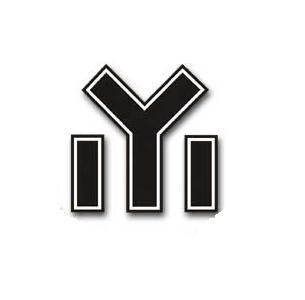The extremely rich symbolism of the Bulgars presented as runic signs and ornaments reflects their mythological notions and religion. Although it is well established and systematised, its significance at times still raises a number of questions. All the scholars studying these signs are unanimous on the fact that they had a multifunctional role, sometimes serving as a means of protection, a family crest, a religious symbol, a trade mark, some as letters and many more. There is much evidence that the Bulgars had their own written system based on runic signs, which was later borrowed and partially used by the Khazars in their pre-Jewish period.
The list of ancient Bulgar signs includes spirals, double spirals, solar signs, human palms and others. These signs are a reflection of the fact that the cult of the Sun was widespread among the early Bulgarians.
The symbols of the Sun are one of the earliest symbols in human art. The most widespread solar symbols were found in the Neolithic and especially in the Bronze Age. We meet them in the art of the Thracians. Among the Bulgars, sun signs are common on the fortress walls of Pliska and Preslav, on household items and building elements. On the eastern fortress wall of Pliska the most common sign is the triskelion, which is a sun symbol. Many such solar signs have been found in the North Caucasus, in the historical lands of Bersilia and Old Great Bulgaria.
Solar signs include rosettes, concentric and spiral circles with radials, intersecting in lines (rays). The cross as a solar sign originally depicted the fire instrument of the primitive man (two wooden branches, transversely located and rubbing against each other). Subsequently, the cross became a symbol of fire, as well as the Sun perceived as heavenly fire. As a variant of the cross, the swastika appears in the Neolithic and symbolises the fiery and solar flame. The cross as a symbol of immortality and resurrection was later used in the Christian religion and became its main symbol.
Another widespread solar symbol is the wheel, because the Sun was thought to be a wheel rolling in the sky.
The most typical Bulgar sign is the sign IYI (epsilon), whose presence on any historical find from the land of the ancient Bulgarians almost certainly betrays a connection with the Proto-Bulgarians. It seems that this sign had a multifunctional meaning, because it was still used 100 years after the Christianisation of the Bulgars. It is believed that this, as well as many other Proto-Bulgarian runic signs, was used as ancestral, protective, magical and production signs.
In and near the old Bulgarian lands near the Caucasus - Dagestan, Chechnya and Ingushetia are found in great abundance and pre-Christian figures, which are variants of the sign "tribozhié" (trinity). These are triskelions, trefoils and tricrosses. These signs were the main pagan symbols for the local population, including Bulgars and the neighboring Nakhs from the North Caucasus. Later, the signs of the type "tribozhié" were brought by the Caucasian Bulgars to Danubian Bulgaria. This can be judged from the fact that the same or similar signs are common figures in the ornamentation of columns, stone slabs, metal buckles and belt ornaments from Pliska and Preslav, as well as in the wood carving on the chest from Terracina. It is also found in the Bulgarian church and home woodcarving from the Middle Ages and in more recent times.
Among the proto-Bulgarians, the cult of the number three can be expressed not only by the triskelion, tricross and trefoil, but also by the sign Y. The sign Y probably played the role of the sacred number three.
The early Bulgarian capitals of Pliska and Preslav, as well as many settlements and fortresses in northeastern Bulgaria and Dobrudja, had a three-layered architectural plan similar to this sign. The cities of Volga Bulgaria also had such a three-layer plan. This way of building and protecting their cities, typical for the early Bulgars, has Central Asian roots, where the cities were built around the beginning of the new era and later contained three concentric layers. These cities and fortresses contained three layers - the inner fortress of the ruler, the middle city, where craftsmen and merchants lived, and the outer city inhabited mainly by farmers and ranchers. All three parts were surrounded by fortress walls.
The ancient Bulgar signs are preserved over the centuries and are woven into carpets, costumes and household items from different ethnographic areas of Bulgaria. Passed down through the generations, they reflect the strong spiritual connection and continuity that exists through the generations. They are an eternal heritage that connects today's Bulgarians with their distant ancestors and preserves their strong roots.

